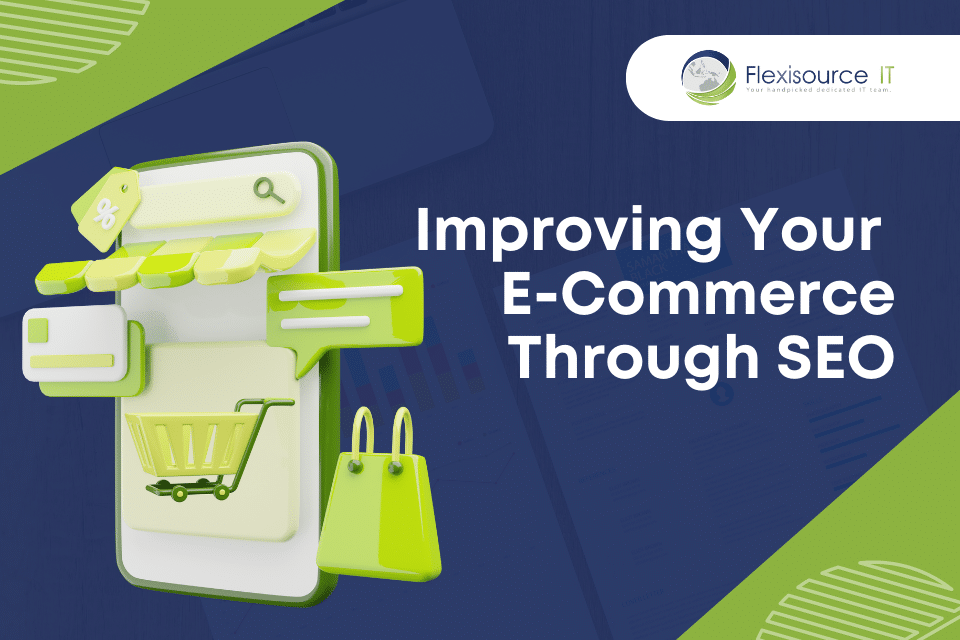It is a wonderful feeling starting your e-commerce business and seeing your products sell. However, just relying on paid ads to make sales will consume much of your profit. The good thing though is that you can get the same results with your website when you improve your e-commerce SEO.
In this article, we are sharing everything you need to know about e-commerce SEO and applying these during the website development phase.
What Is E-Commerce SEO?
So let us start off with the question: What is e-commerce SEO?
Basically, it is a collection of search engine optimisation (SEO) strategies to make your e-commerce website climb the ranks and make it easier to be found on Google’s search engine results pages (SERPs).
Compared to paid ads, e-commerce SEO is practically free. That said, in reality, you need to put in a lot of effort and do it consistently, in the beginning, to rank up before you see any results.
What Are The Benefits Of Good E-Commerce SEO?
Aside from that, there are plenty of benefits that you will reap. In fact, you will continue to enjoy these even after you are finished with the website development of your e-commerce site. Here are a couple of them:
Improve Your User Experience
E-commerce SEO is not about targeting the relevant keywords and answering the most common questions that your target audience asks.
Providing a good user experience is something that both Google and your web visitors are quite partial about. It can actually increase your chances of converting your audience into paying customers.
Expand Your Reach
In general, websites that are performing well generate more organic traffic. This is helpful to spread the word about your e-commerce brand and reach more of your target customers.
Increase Brand Awareness
E-commerce SEO can help increase brand awareness without having to shell out a big budget compared to paid ads. This is because the more people visit your website organically, the higher you climb the ranks and eventually you reach first-page results.
We know that the majority of web users just stick to the first-page results. When your e-commerce website achieves this it makes it easier for your brand to be found.
Website Development Elements For E-Commerce SEO
So, how do you get the great benefits we listed above? Here is an e-commerce SEO guide you can apply during website development:
On-Page SEO
This is all about making sure Google understands what each of your web pages is about. When done right, on-page SEO can help your e-commerce site appear on the first page and on other SERP features of Google as well.
For this, keyword research is essential. It is the first step to improving your e-commerce SEO. Here is what you should do:
Keyword Research
It is important to identify the keywords you choose based on difficulty, search volume, and intent.
This is because if you get this part wrong it is possible that: One, you will have a hard time ranking on the target keywords you have chosen. Two, you will get to the first page but the keywords barely have any traffic at all.
To avoid this, make sure to use SEO keyword tools like Google Keyword Planner and Ahrefs, to name a few. You should also consider creating a keyword matrix.
What exactly is a keyword matrix?
Basically, it is a list of keywords and corresponding data. First, you search all the relevant keywords and then organise it all, an excel sheet will do, from the most difficult to easy based on keyword difficulties, search volume, and intent.
There are a couple more ways to conduct keyword research:
- Keyword research on e-commerce platforms. The best thing about online shopping platforms, like Amazon, is that the keywords you find there already have the intent of buying. Just type in a short-tail keyword and see the autofill suggestions.
- Check your competitors’ keywords. Basically, you are going to use the same keywords—but not all of them. You should carefully consider which ones to use since it is going to be hard if you go toe-to-toe with them.
From there, it will be a lot easier to determine which ones work best for your e-commerce SEO campaigns.

Product Pages
As an e-commerce brand, making your product pages a lot easier to find is possibly one of the important things to help improve your website. There are a couple of ways to do this:
- URLs. Add the primary keyword in the URL.
- H Tags. Put the primary keyword at the beginning of the title tag or H1 tag as much as possible.
- Body Copy. Write a three-hundred-word introductory copy mentioning the primary keyword at least three times before the product description.
- Image Alt Text. Add the primary keyword in the alt text.
- Metadata. Include the primary keyword in the metadata. This will help improve ranking and click-through rate.
These are pretty straightforward and simple practices that will give you an edge in your niche. You can take it a step further and customise these accordingly to rank better for the category pages—a topic page that contains a group of products.
Content
“Content is king!”
This rings true even for e-commerce brands. In fact, the quality content that you publish makes it easier for your store to rank using long-tail and short-tail keywords as well as backlinks. Plus, it is a great way to highlight your products without going hard on the promotional aspect.
Technical SEO
Now, we are on the technical side of e-commerce SEO. Here, you will need to be meticulous in your website development.
Website Architecture
Whether you are still in the website development phase or looking to update your web store, make sure to follow the “golden rule” for a great website structure
- Keep it simple.
- Make it scalable.
- Stick to the three-click navigation. Meaning, it should only take up to three clicks to go from page to page.
- Apply keywords to make page URLs and subdirectories to be more relevant.
Page Speed
Google and web users are quite particular about a website’s render time or loading speed. For one, better site speed will help improve your SERP rank. Two, web users will not stick around if the loading time is too slow.
Redirect
If you have redirects make sure that this is relevant to the original web page and the primary keyword used. If you take care of this detail early on in the website development phase, you can avoid losing points to rank better in SERP and improve your e-commerce SEO.
Internal Links
Internal links help your web visitors to go from one web page to another. This comes in handy when you use it for your product pages and blogs.
A big plus for internal links is that your web visitors are further encouraged to explore the rest of your e-commerce store and are more likely to be converted into paying customers.
HTTPS
As we mentioned before, URLs are a great way to help improve your website’s ranking. For this, just make sure to add your keywords since each URL is basically an extension of the web page already.
Mobile-friendly
To save some time and effort, you should adopt a mobile-first approach as early as the website development phase. This is because a large chunk of web users worldwide use mobile devices to surf the internet.
Duplicate Content
Redundancy in your web store is not a good thing. In fact, Google does not like it all and penalises sites that have too many redundant pages.
Early in the website development or even during content planning, make sure to create a spreadsheet or list to keep track of the content you publish.
Sitemap
Sitemap helps Google understand which of your web pages are important by providing the necessary information. This is a detail you should not overlook during website development since this can help lead web visitors to your web pages—ultimately improving your e-commerce SEO performance.
Link Building
There are two things Google cares about out of all the rest when it comes to link building: Content and links.
Backlinks enable your website to improve its ranking with the help of other websites with higher domain authority. There are plenty of ways to do this:
Resource Pages
Resource pages are essentially the go-to place to learn about things relating to your industry. This can be a blog or a static page.
A way to find resource pages on Google is by searching “inurl: resource + X”. X here is the general name of your product, or it can also be a topic or industry. After that, create a spreadsheet detailing the promising URLs and contact info. Then, just reach out to them and ask if you can collaborate.
Broken Links
Broken link-building is considered one of the easiest link-building strategies.
You can use Chrome extensions like Check My Link to look for websites that are in your niche or relevant that have broken links. Once you find some, you can just reach out to the site owner to resolve this.
Guest Posting
Guest posting is a collaborative effort between your website and another website. It is a great way to build links with industry experts, increase exposure, and create a good rapport.
Steal Competitor’s Links
This is a two-bird-one-stone tactic. You can improve your SEO ranking and get ahead of your competition. You can use SEO tools like Ahrefs to find out the keywords and links your competitors use.
Measuring E-Commerce SEO Performance
Lastly, you should keep an eye out for your e-commerce SEO campaigns. Unlike ads, which are essentially just an off-and-on switch, SEO needs consistent care—especially if you are still starting out.
There are SEO tools that can help you keep track of your e-commerce SEO performance:
- Ahrefs. It has a tracking feature that lets you keep an eye out when you climb or fall down the ranks.
- Google Analytics. This tool can have metric features to measure organic traffic and engagement of your website.
You Got This!
E-commerce SEO takes a lot of time and effort from the start. The best thing about this though is that you can apply the best practices as early as the website development phase. Once you get the ball rolling and gain traction when you climb the ranks, it can continue to generate sales with minimal effort.







